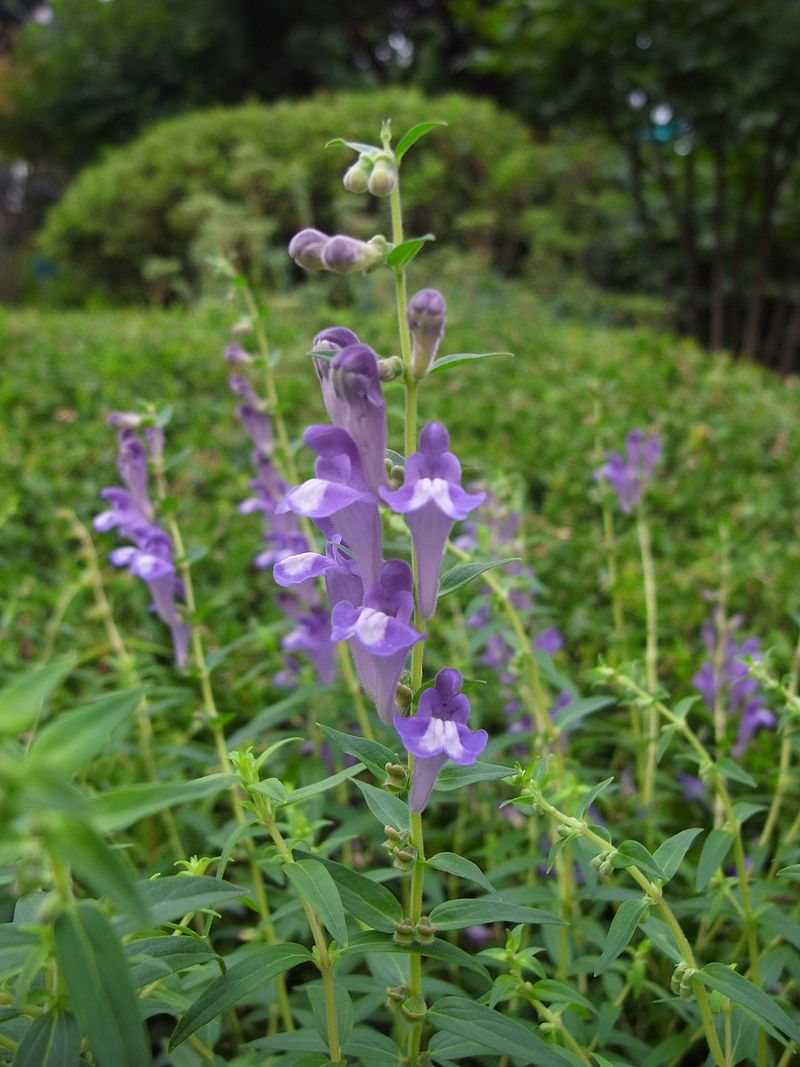Skullcap is the common name for plants in the Scutellaria family. They are called “skullcap” because the flowers resemble miniature medieval helmets. The two most commonly used skullcaps are the Baikal Skullcap, an Asian native, and the Blue or Virginia Skullcap, a North American native.
The Baikal skullcap (S. baicalensis) is native to northern Asia, China and Korea. In Chinese medicine it is called Huang Qin and is considered one of the 50 fundamental herbs. The dried root is used to treat insomnia, headaches, fevers and colds. It has demonstrated liver toxicity and is not recommended for use in people with diabetes.
Baikal skullcap is a perennial plant hardy in zones 4 through 8. It prefers full sun but will tolerate light shade. Plant it in well-drained soil. It is drought tolerant once it is established. The plants are small, only 12 inches tall. They grow along the ground rather than straight up so they are suitable as a ground cover. The purple flowers appear in May and are quite showy, growing on stems up to 12 inches in height.
Baikal skullcap is easily grown from seed that are started indoors 6 to 8 weeks before your last frost date. The seedlings can be transplanted outdoors after all danger of frost has passed. Space your plants 12 inches apart.
The Blue Skullcap (S. lateriflora) is native to North America. The Native Americans used it to treat gynecological conditions and rabies (earning it the common name of Mad Dog Skullcap). Modern herbalists use it to treat anxiety and to relax muscles. Like its Asian counterpart, it has demonstrated liver toxicity. It should never be used by pregnant women because it can cause a miscarriage.
Blue skullcap is a perennial plant hardy in zones 6 through 9. It must be grown in full sun. It doesn’t tolerate any shade. It prefers wet soil. The plants grow upright to a height of 2 feet. The blue-purple flowers appear in June.
Blue skullcap can be grown from seeds that are started indoors 6 to 8 weeks before your last frost date. The seed must be cold stratified in your refrigerator for a week before planting. Once planted, germination should occur in 2 weeks. Seedlings can be planted outdoors, 12 inches apart, once all danger of frost has passed.

